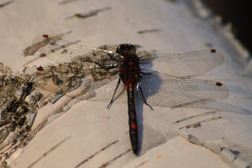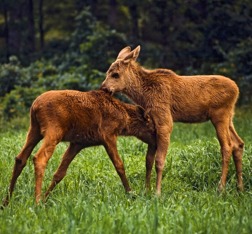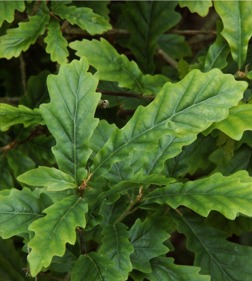Ecopark Halle-Hunneberg
At the southern point ofLakeVänernthe tableland mountains ofHalleand Hunneberg are outlined as dark silhouettes against the sky of the Västgöta flat lands.Halleand Hunneberg's natural surroundings are magnificent and mythical and have been a source of fascination to visitors throughout the years.
The mountains of the elks
To hike along the majestic mountain slopes in the barren, windswept forest, with the fertile flat land far below is a powerful experience. The remains of the ancient castle, the deserted crofters´ holdings and cultivated areas tell us the tale of the difficult lives the people on the mountains faced.Halleand Hunneberg are also known as the mountains of the elks and every year thousands of tourists are attracted to the mountains to see the imposing king of the forest.
West Swedens' only ecopark
To preserve and develop natural and cultural values Sveaskog has chosen to turn Halle-Hunneberg into an Ecopark. Apart from the importance of the forest for outdoor living and the the well-being of the people, there are also other reasons forHalleand Hunneberg to become one of Sweden´s 36 ecoparks. First and foremost, it is a large connected area in a part of the country where such areas are rare. At the present time, Halle-Hunneberg is the only ecopark in the western part ofSweden. On behalf of the landowner Sveaskog, the Halle-Hunneberg Ecopark was inaugurated by King Carl XVI Gustaf in September of 2004.
Unique forest environments
There are unique and biological valuable forest environments on the mountains. Some of the land is protected as a nature preserve. By different investment plans promoting the nature of the ecopark the nature preserve can become even more valuable for the area´s plant and animal life. Today the Ecopark comprises around6,700 hectares.
The ecopark preserves and develops
Preserving biological diversity requires a number of different methods – everything from active management to keeping things untouched. By well-planned preservation, Sveaskog will recreate natural pine and deciduous swamp forest, free up areas for oak trees, restore wetlands and restore ancient crofters' holdings. About half of the ecopark´s productive land area used for forestry will be used to produce timber and consideration will be taken to natural, cultural and outdoor living.
Today, Ecopark Halle-Hunneberg comprises around 4,800 hectares of productive forest. Please continue to read about Ecopark Halle-Hunneberg on the following website: www.sveaskog.se





